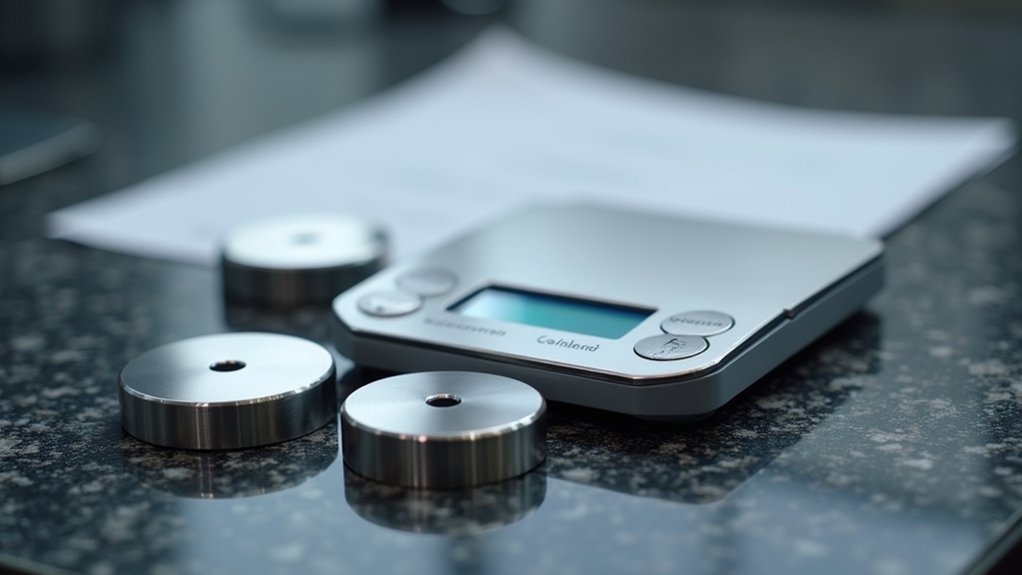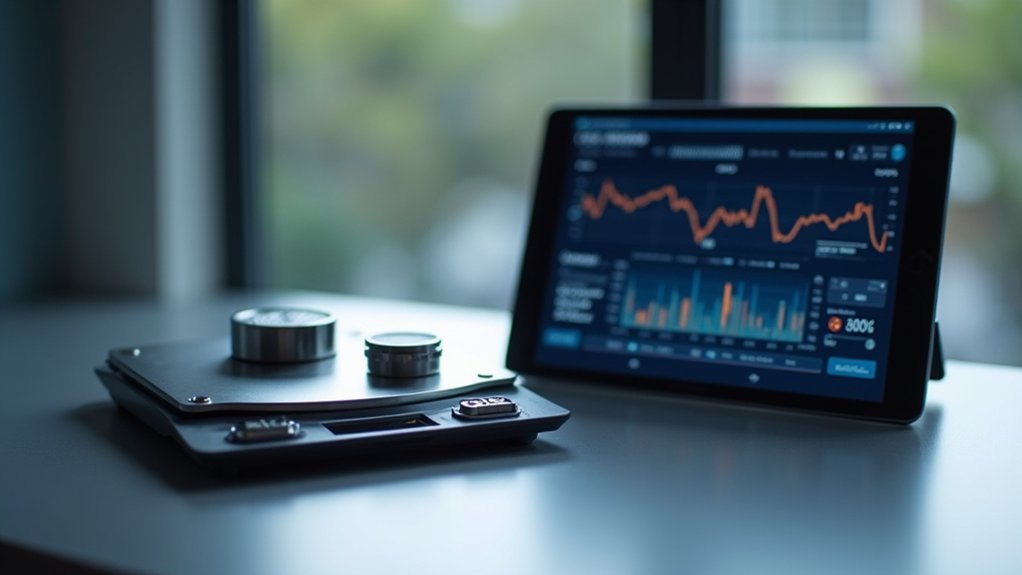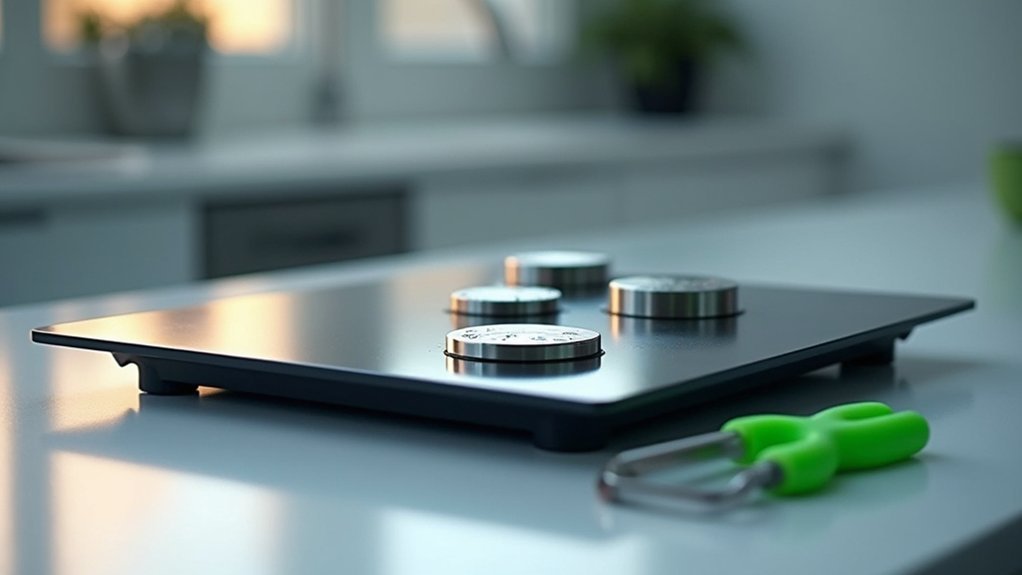To calibrate your digital scale perfectly, you’ll need three essential tools: precision calibration weights in various denominations (1g-20g), a digital level indicator to guarantee proper positioning, and calibration software that connects to your scale for real-time accuracy verification. Store your weights in a clean, dry place and establish a regular maintenance schedule to maintain consistent performance. The right calibration toolkit will transform your measuring experience from questionable to professional-grade.
Precision Calibration Weights: Choosing the Right Standard

Five essential weight denominations form the foundation of proper digital scale calibration: 1g, 2g, 5g, 10g, and 20g.
These standard weights guarantee your scale provides consistently accurate measurements across various ranges.
Standard calibration weights are the cornerstone of measurement accuracy, ensuring your scale delivers reliable results in every weighing scenario.
When selecting calibration weights, opt for certified options that meet industry standards.
Choose weights made from durable materials like steel with hard plating to resist wear and tear and maintain their precision over time.
To properly calibrate your scale, match the weights to your device’s capacity and resolution.
Using inappropriate weights can lead to inaccurate readings and compromise your measurements.
Store your calibration weights in a clean, dry place to prevent contamination.
With proper care, these precision tools will help maintain your digital scale’s accuracy for years to come.
Digital Level Indicators for Optimal Scale Positioning
A perfectly level surface serves as the foundation for accurate digital scale readings. When you’re ready to calibrate your scale, first verify it’s positioned correctly using a digital level indicator.
These essential tools display whether your scale sits on a level surface, allowing you to adjust accordingly before normal weighing begins. Most indicators feature built-in calibration functions that let you establish reference points as you learn to properly position your device.
Before you clean your scale or adjust the calibration, check that it’s perfectly level to prevent measurement errors. Some advanced models even measure angles, offering versatility in different environments.
Calibration Software and Applications for Accuracy Verification

Modern digital scale maintenance goes beyond physical adjustments with specialized calibration software that transforms how you verify measurement accuracy. These applications connect to digital scales via Bluetooth or USB, providing real-time monitoring during the calibration process.
| Software Feature | Benefit |
|---|---|
| Connectivity options | Direct communication with scales for immediate adjustments |
| Step-by-step guides | Simplified calibration process for specific scale models |
| Standard weight databases | Automatic accuracy verification against known values |
| Analytical tools | Track measurement trends to identify maintenance needs |
You’ll appreciate how these applications can set reminders for regular recalibration based on your usage patterns and environmental factors. The advanced analytical tools help you monitor performance over time, revealing subtle discrepancies before they affect your measurements. With calibration software, you’re not just checking accuracy—you’re establishing a thorough maintenance system for consistent, reliable results.
Frequently Asked Questions
What Can I Use to Calibrate My Digital Scale?
You can use dedicated calibration weights, coins like quarters (5.67g) or pennies (2.5g), or a 500ml water bottle (500g). Always place your scale on a flat, stable surface when calibrating.
How Do I Make My Digital Scale More Accurate?
To make your digital scale more accurate, you’ll need to calibrate it regularly, place it on a flat surface, clean it often, allow warm-up time, and recalibrate after environmental changes occur.
How to Fix Digital Scale Calibration?
To fix your digital scale calibration, place it on a flat surface, enter calibration mode according to your manual, use accurate weights for testing, wait for confirmation, and maintain fresh batteries and cleanliness regularly.
How to Get an Accurate Weight on a Digital Scale?
To get an accurate weight on a digital scale, place it on a flat surface, let it warm up, zero it before use, avoid air currents, and calibrate regularly with certified weights.
In Summary
By investing in quality calibration weights, positioning tools, and verification software, you’re ensuring your digital scale delivers accurate readings every time. You’ll avoid costly measurement errors and gain confidence in your results. Remember to calibrate regularly and follow manufacturer recommendations for your specific model. With these three essential tools in your arsenal, you’re well-equipped to maintain precision in all your weighing needs.





Leave a Reply